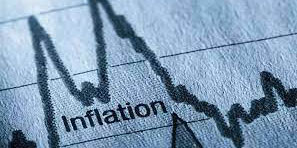All About Fidelity Funds for Dividends
Oct 30, 2022 By Triston Martin
Fidelity provides access to various dividend mutual funds, which can generate income for investors quickly and consistently. You can invest in them to increase your money over time, like other mutual funds, but you'll also receive dividend payments regularly.
The top dividend funds offered by Fidelity can help you achieve your long-term and short-term objectives. You can expect a quarterly interest payment in addition to your regular income.
Get the lowdown on dividend mutual funds and which Fidelity products might be the most fantastic fit for your retirement income needs.
Putting Your Money Into Dividend Mutual Funds

Standard mutual funds allow investors to contribute to a bigger pool of capital than the fund's managers invest. The funds are invested in various financial instruments. All these holdings make up a single portfolio handled by experts who know the market.
Financial stress and effort might be reduced when you hire a professional to handle your money. Reduce the risk of market fluctuations; this is a common motivation for buying mutual funds. Although investing in a diversified portfolio of assets is a surefire method to grow your money over time, you may not see the fruits of your labour regularly or in the form of cold, hard cash.
Dividend funds could be a good choice if you want to invest for the long haul and receive a steady stream of additional income.
Can You please explain how dividend funds operate?

Mutual funds can be further subcategorized, with "dividend funds" consisting only of stock equity investments: High-quality, publicly-traded stock in a major corporation. Large-cap or big-cap equities are the jargon of the investment world. As a result, their market worth is over $10 billion, and they are extensively acquired. These organizations have been stable for some time and reward their investors regularly.
Mutual funds focusing on dividends are typically grouped with other value stock funds. They are currently selling for less than their actual value. Typically, they are not as risky as growth stock mutual funds.
When you put your money into a dividend fund, you're essentially buying a piece of the success of a diversified collection of firms. Generally speaking, dividends are distributed quarterly in the form of cash payouts. However, the exact timing of each distribution may vary slightly from quarter to quarter. You can either reinvest the money into the fund or keep the money for yourself (which helps build long-term growth). Most funds will automatically choose to reinvest their earnings, so you'll need to take affirmative action (such as marking a box or signing a contract) if you want to cash out your investment.
Who Should Invest in Dividend Mutual Funds?
Retirees often choose mutual funds that pay out dividends because they are a passive and relatively safe way to increase their income. Long-term investors can reinvest their dividends through additional share purchases rather than receive a cash distribution. 1
When you're starting out as an investor, you don't need to know much about the market, so dividend mutual funds are a smart alternative. When you're starting, you don't have much to lose financially, but you can still exert some influence over your finances by making informed decisions and monitoring their effects.
Top 3 Dividend-Paying Fidelity Funds
Savvy investors know to check the 30-day SEC Yield of a fund to determine which ones pay the highest dividends from Fidelity. The SEC yield or 30-day yield is another name for this. You can use this number to calculate the net monthly profit of a fund during the past calendar month. Since each fund is different, it is not necessarily indicative of how much you will receive as a payment, but it does provide a rough estimate. Mutual funds and equities are evaluated using the SEC yield; thus, a high yield indicates that the fund has paid out more than average relative to its peers over the past term.
Money evaluation is more art than science. Professional investors examine various measures, such as the SEC yield, distribution yield, annual returns, and shareholder reports to forecast a stock's (or a fund's) future performance. The most important consideration is whether or not your chosen fund is consistent with your risk appetite and financial objectives.
The growth in value of a fund over a year, known as its annual return, is another indicator of its success. The yearly return helps determine the consistency of a firm over time, which can inform investment decisions. Still, it does not provide enough information to understand the company's short-term profitability or dividend distributions fully. Annual returns might not usually include consistent dividend payments.








